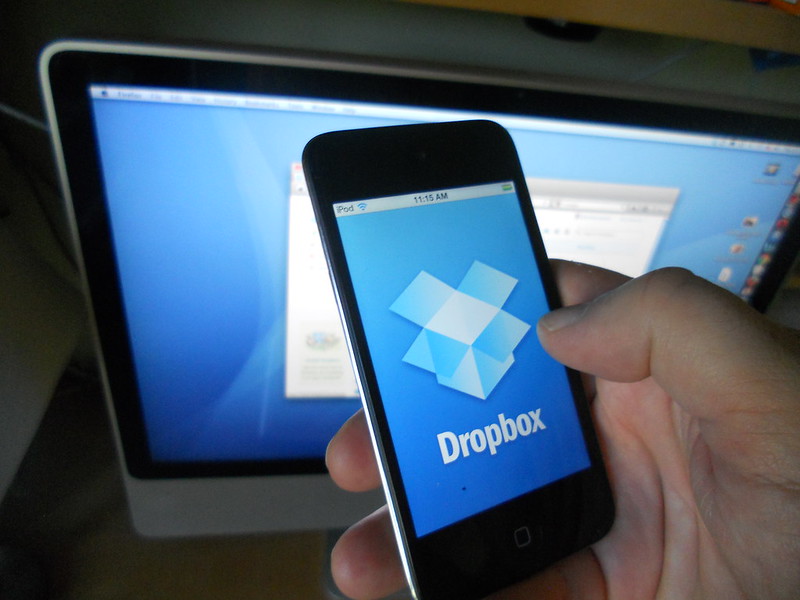Pack well and plan your journey. Transitioning to the cloud has many advantages but it has challenges too. Understand what type of cloud customer you are. Take the parts that work for your business and deliver rapid ROI. Leave the rest behind and only bite off more when you are clear on the benefits and how they will be realised.
I paid little or no attention to the camp site that I chose (the internet didn’t exist and my decision was based on a classified ad in a local paper, of which there were only three to choose from).
I didn’t plan the route as SatNav hadn’t been invented and I had been confidently told it was an easy journey (just down the M5 and turn right, you’ll be there in no time).
I made no plans for what I would do when I got there and the only provisions I took were a tent, a sleeping bag, a radio-cassette player, some sausages and a stolen bottle of Bacardi (taken from my dad’s cabinet I hasten to add).
It wasn’t a very good holiday. It took an age to get there. When we eventually found the campsite we couldn’t find where anything was, we hadn’t brought enough money to pay for all the extras the proprietor demanded, and the provisions that we brought were soon out of date and useless (save for the Bacardi).
When I talk to business leaders about their experience of joining the cloud glitterati I always remember that holiday and think how similar our experiences have been.
It’s a combination of the vendors over-egging the simplicity of the move to the cloud and customers underestimating the complexity of the move
MARK ARMSTRONG – RIMINI STREET
What is cloud?
Cloud must be one of the most common words in modern business language. It conjures exciting images of global opportunities, economies of scale and endless flexibility. Some talk about cloud applications, some talk about cloud infrastructure, and others about cloud strategy; others don’t know which variety of cloud they are talking about but they are talking about it all the same.
Let’s break it down; cloud apps are most likely just a slightly worse version of the apps that you currently use. Cloud infrastructure is just another piece of hardware somewhere other than your server room. And cloud strategy is something consultants talk about when CFOs start to feel the pinch on their wallets. That may be a very simplistic view which doesn’t take into account the boundless flexibility, cost savings and agility but it should serve to remind tech buyers that they aren’t buying fairy dust and the idea that cloud on its own can deliver any of these benefits is nonsense.
It may appear from this intro that I am anti-cloud but that could not be further from the truth. In its plainest terms; cloud technologies will revolutionise nine out of 10 businesses globally. It will make companies efficient, more proactive, better able to adapt, it will redefine customer and employee experience, free up workers for higher value tasks and open up opportunities that legacy software and infrastructure could only dream of. The possibilities for mature cloud technologies could not be greater, and in some order of two to five years, all enterprises will operate in some sort of cloud if they don’t already.
The two big stumbling blocks
Why the reticence then? Why lambast cloud and then extol its virtues? The answer is twofold; firstly, cloud technologies are not mature. We are already on the second or maybe even third generation of capability and the shift to the fourth, fifth and sixth will be far quicker than the slumbering decade it has taken to reach where we are today. Being immature doesn’t mean that the current offerings aren’t good or don’t work. But it does mean that the landscape is evolving at a rapid click, and given the time many migrations take, it is likely that most customers will arrive at the finish line only to be presented with a new starting point.
Secondly, and more importantly, the complexity of moving large enterprises to the cloud has been oversimplified by the market and miscalculated by consumers. In most cases moving to the cloud is a huge undertaking, often significantly more difficult than a technical upgrade of an existing on-prem solution and having far reaching implications for business processes that have been ingrained over years or perhaps even decades. There will be regulatory, compliance and security issues that global entities will have to wrestle with, all of which contribute to a series of new challenges and cost burden.

Businesses often look at the application cost and the implementation cost, but fail to fully scope out the post ‘go live’ management of the solution
CHRIS BROOKS – SYMATRIX
Mark Armstrong, GVP at Rimini Street agrees, and said: “Without wanting to sound too harsh it’s a combination of the vendors over-egging the simplicity of the move to the cloud and customers underestimating the complexity of the move. Migrating customers to the cloud is the number one priority for each of the main cloud service providers to both protect their existing revenue streams and drive consumption of their applications in the cloud. The message they are pushing is simplicity, which resonates for most enterprise customers, as they have struggled for a long time to manage complex existing IT infrastructures. However, in the eagerness to simplify, and therefore develop more agile IT systems, customers are not always spending enough time understanding the role and importance of their current business applications.”
The move to a true ‘cloud-first’ enterprise is hampered further by the lack of focus on what to do once you actually arrive at your destination and having a clear picture of the long term economics of living in the cloud. Being on the cloud and prospering in the cloud are very different things. Most of the narrative from the vendors and consultancies is centred around the migration path rather than the realities of perpetual change and a new raft of costs allied to release management, training and change that cloud inevitably will require.
Chris Brooks, managing director at Symatrix, said: “Businesses often look at the application cost and the implementation cost, but fail to fully scope out the post ‘go live’ management of the solution (release management, regular testing cycles, change costs and training). The result of missing this crucial phase in the business case is that once they are live, companies either have to go back for further investment, which damages the reputation of the solution and the programme, or they stick with their original investment and struggle to manage the continual evolution that cloud involves. As a result they completely miss the benefits that cloud is predicated on.”
Robert Douglas, planning director at Adaptive Insights goes further and says that even if the business case for moving to the cloud is properly defined many organisations are missing out on the full value of moving to the cloud by not addressing underlying issues within enterprise systems and failing to use data and insights to their full potential.
“Simply identifying the clear business case for moving to the cloud does not ensure the full strategic and financial benefits. Doing so requires the incorporation of a data source integration system that ensures ERP data is made accessible, able to be updated in real-time, as well as used for quick and proactive modelling of multiple scenarios that can be used for on-the-fly course correction. This is something many enterprises initially fail to realise. A common mistake enterprises make when moving to the cloud is that they fail to address inherent issues that already exist within their ERP systems. Siloed and unreliable data will not simply disappear at the moment of go-live, unless there is a concurrent investment in architecture and integration frameworks that allow for data from any ERP, GL (general ledger), HCM (human capital management), CRM (customer relationship management), or other system to be used for planning and reporting across the business. This also needs to be presented in a way that is intuitive and seamless. Doing this lays the groundwork for cloud-based collaboration that spans across the organisation, allowing all employees to understand how the business is doing in real-time, and where their individual department fits in.”
Are all advancements a good thing?
One of the other major issues that cloud customers will have to come to terms with is the way in which their applications will be patched and upgraded – autonomously. On the face of it having enhancements managed by your technology partner puts an end to the misery of technical upgrades for the install customer base. You are always on the latest release of the software, security provisions, bug fixes, and more, are handled centrally by the ERP vendor and you never have to worry about maintaining an up to date version of the solution. This all sounds very appealing but there are some serious issues to consider, especially if you are transitioning from a heavily customised set of applications to a vanilla product.
However, Douglas from Adaptive highlights this as one of the key advantages of SaaS applications, and said: “Many legacy ERP solutions rely on the customer staying on top of updating the product, which can cause issues, such as downtime if the process is skipped, whether intentionally or unintentionally. While this ultimately impacts productivity, it may also cause other challenges, such as having to engage IT and support to get onto the current version of the product. However, there are easy ways to fix this as businesses make the move to the cloud, as integrated multi-tenant cloud solutions can automatically update in a way that’s seamless to the customer. This is one of the inherent values of moving to the cloud and creates an opportunity to leverage new features and updates seamlessly.”
Indeed, for many, the availability of evergreen applications that do not require constant maintenance will be seen as a boon. But others argue that updates to core business applications which are designed to serve the many, not the individual, can also have some downsides and could create a situation where application enhancement is actually a detraction rather than an enhancement.
“The additional complication with SaaS applications, especially in multi-tenant environments, is that vendors are catering for the needs of a number of customers. Consequently, you could end up with product enhancements that you did not ask for, which could be a good or a bad thing. What is critical is that customers plan their approach thoroughly and make decisions based on what is right for their business, not what the vendor delivers in the latest service pack,” said Armstrong from Rimini Street.
Armstrong points to Rimini Street’s partnership with Salesforce; the first, and still one of the very few, pure play SaaS vendors, as an example of how managing SaaS applications, and particularly the way in which applications are delivered and updated, as a key measure of the challenges many SaaS customers will face. “We believe Salesforce sees value in partnering with us, because our whole ethos is focussed on support of customers”, he said. “The SaaS vendors are very focussed on helping developers to simplify how they get application up and running, but not so focussed on the ‘Ops’ side of supporting customers once they are using the applications. This enables us to play an invaluable role ensuring customers make the most of their SaaS applications by keeping up with the pace of innovation. Ultimately, this benefits the SaaS vendors, because it means happy customers and therefore, more sustainable consumption of their applications.”
A common mistake enterprises make when moving to the cloud is that they fail to address inherent issues that already exist within their ERP Systems
ROBERT DOUGLAS / ADAPTIVE INSIGHTS
Replication of legacy solution in the cloud
All of the aforementioned issues with cloud adoption are surmountable challenges. However, there is one recurring mistake that many enterprises make, sometimes without even realising. Moving to the cloud with a SaaS ERP cannot be viewed as anything other than one part of a re-engineering process for an entire enterprise. Those that attempt to replicate legacy processes in the cloud, or worse still, not realise that is what they are doing, are sure to miss out on the predicated benefits.
Brooks from Symatrix said: “Simply replicating the legacy solution in a new environment is a huge missed opportunity and, in many instances, will create added challenges in BAU. Frankly, this won’t deliver the business case. I recognise that in some instances there has to be replication, for example certain security processes in specific governmental organisations, but these should still be challenged to see if there are more efficient ways that they can be managed.
“We have experience of on-boarding a number of cloud customers into our managed services who were implemented by another SI with little regard for adopting new processes. As a consequence, they have struggled on for a year or two, then approached us for help as they hadn’t recognised the business case benefits they had committed to.”
Ben McGrail, managing director at SNP believes that legacy thinking is holding many businesses back just as much as their legacy applications and processes and says that a more fundamental shift in the way that enterprises view their relationship with technology is required to draw out the value of cloud. He said: “As companies prepare to move their ERP landscapes to the cloud, they need to change the way they think about their IT estates. I feel that some of the advice that customers are receiving is too rooted in old-world thinking. There are obvious and major benefits in a move away from on-premise and in-house hosting, including cost reduction, modernised infrastructure, performance, security, focus on higher value activities and rapid integration with AI and analytics. But cloud also allows businesses to be much more flexible and react more quickly to change. The ability to scale up and, just as importantly, to scale down, on demand, should be at the heart of a company’s thinking as they prepare their cloud strategy.”
And Armstrong from Rimini Street agrees saying that ERP customers must think strategically about their options and consider what will be lost with adopting vanilla applications as well as what might be gained. He said: “CSPs are not keen on customers transitioning their existing old systems to the cloud, because it undermines the efficiencies of the cloud model. However, if you are a long established business with processes that are highly customised to your industry and individual business you are going to be reluctant to forfeit what has become integral to your competitive advantage.
“Therefore, you have to weigh up what strategy makes most sense for you. You could move away from your legacy applications and adopt their vanilla equivalent in the cloud, but what consequences will follow for your competitive advantage? Will you lose unique processes that drive efficiency? Will there be a massive culture shock for your employees having to grapple with an entirely new system? If you do try to replicate your legacy applications in the cloud how time consuming will that be? Can you even replicate the functionality you had in the cloud? What will be the extra cost the CSPs will demand for supporting customised applications in the cloud?
“The history of the ERP market is littered with examples of over-ambitious implementations that have failed to deliver benefits. Moving to the cloud is no different. Get your approach wrong and it will impact the performance of your business.”
Indeed it is when some reports estimate that two out of every three dollars spent on digital transformation is wasted, it is high time that enterprises started taking a more measured approach to buying their technology. Consider this; in 1769 Nicolas-Joseph Cugnot built the first automobile capable of human transportation and by 1808 the first internal combustion engine vehicle had been designed. It was some 100 years later that Henry Ford arrived at the Model T and gave the world the workable blueprint for an idea that was more than a century old. Modern technology evolves at a much faster click than it did during the industrial revolution, but the reality is that we do not currently have the final incarnation of the tech that we will ultimately take forward as the enterprise technology version of the Model T.
Armstrong summed up by saying: “The biggest challenge with the cloud, especially considering what to do once you are live, is getting to grips with what the future looks like. Cloud 1.0 was sold on simplification and utility, but Cloud 2.0 is a much more sophisticated proposition. The challenge is that the technology is moving so quickly and is still maturing.”





